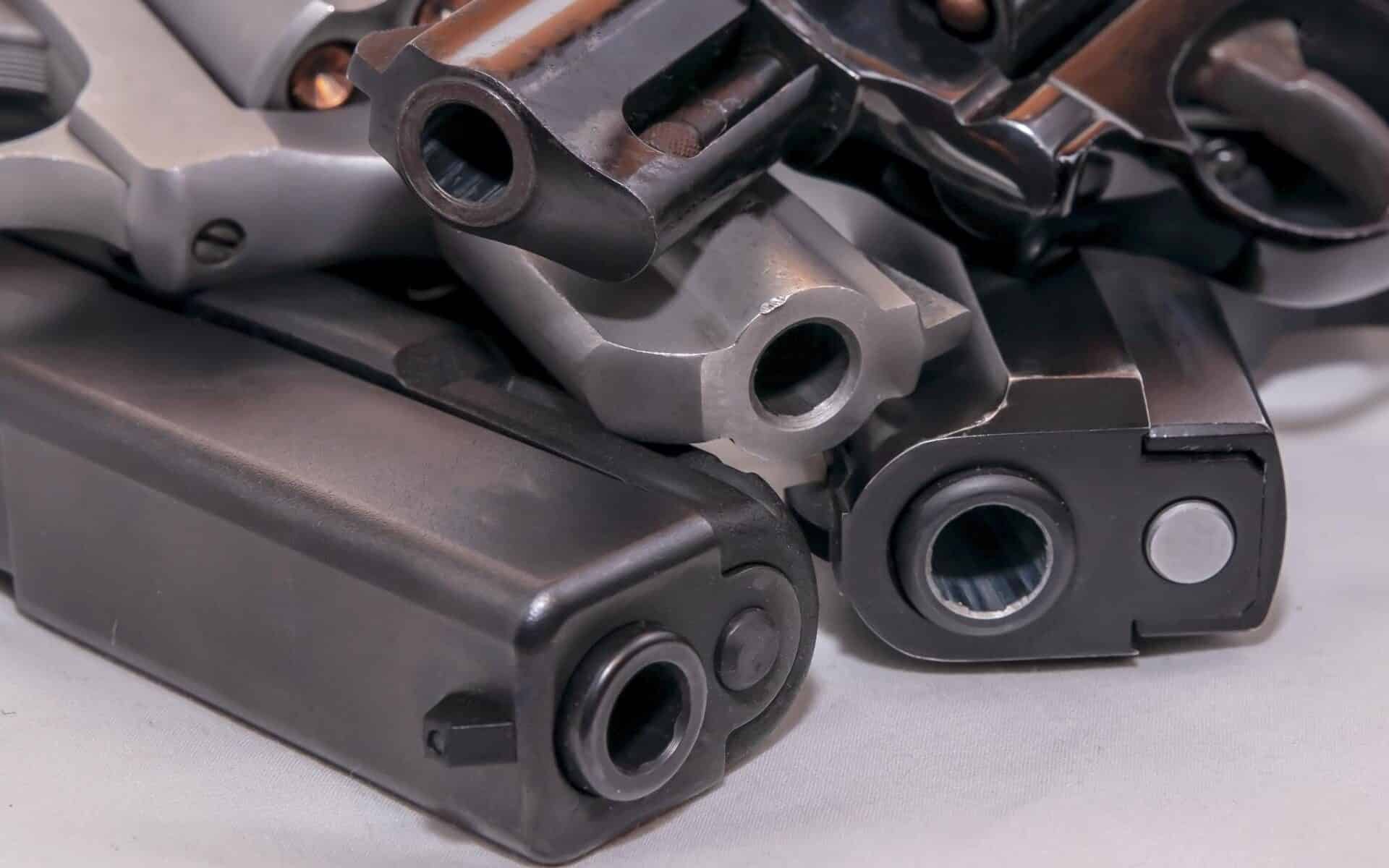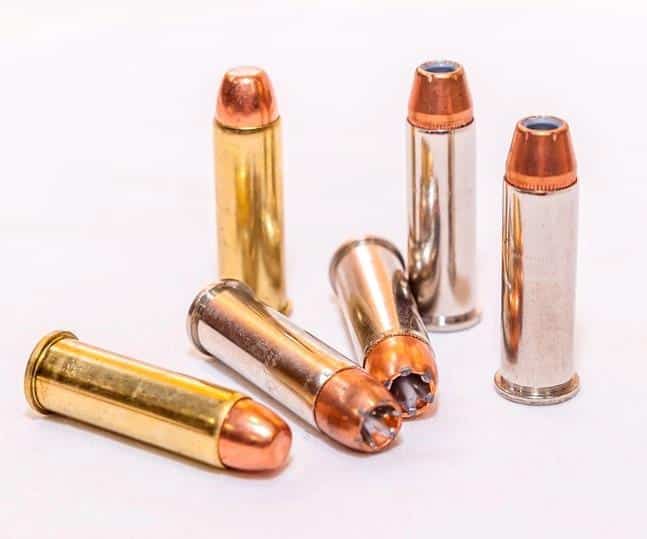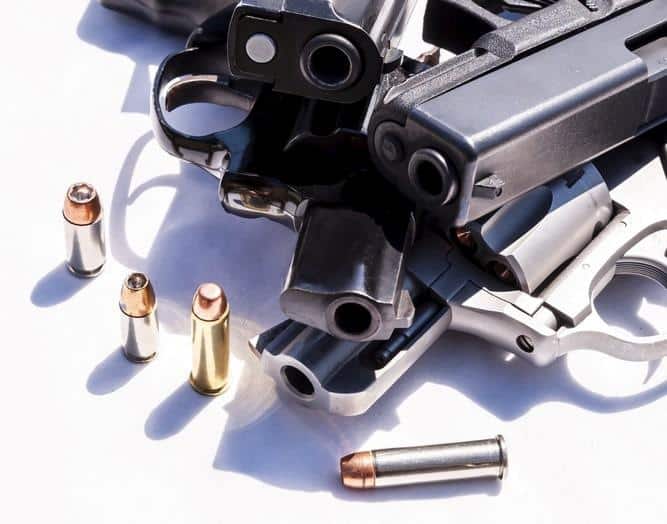Your cart is currently empty!

.38 Super vs .38 Special: A Caliber Comparison
Right out of the gate you should know that these two rounds are not interchangeable. In fact, individually, they go to two different types of firearms. The .38 Special is a revolver round and the .38 Super is manufactured for a semi-automatic pistol. To say the least, they are different enough that you cannot mix them.
Factors that Influence Bullet Performance
There is a lot that goes into bullet performance. First, a bullet – for this discussion – is the part of the round that flies off to hit the target -the projectile. The rest of the round includes the casing, primer, and primer mechanism, plus the powder. So, the terms “round and bullet” are quite different also.
Factors that impact bullet performance often come from the round itself. It includes:
- Grain size – the weight of the projectile -bullet
- Casing dimensions
- Bullet type – hollow point, solid, fully metal jacket, etc.
- Powder type – black, smokeless, gray, etc.
- Condition of the round and primer – corrosion, damage, packing errors, etc.
- How you configure what goes into the round impacts the environment in which the bullet acts. That can include higher pressure when the powder burns, increased or decreased muzzle velocity, Whether the recoil is manageable – too weak or too strong, and how much muzzle energy there is.
Higher pressure generally means that the bullet has more muzzle velocity whereas; lower pressure may mean that the bullet has increased muzzle energy. Energy is the force of impact and velocity is the speed at which the bullet reaches the target. These also indicate to some degree the bullet diameter or weight.
Choosing the Right Round
All of these factors and more go into creating a round that behaves in a certain way. It is much like a recipe for baked bread. If you add too much of this ingredient or change the milling size of the flour, the outcome is different from the original recipe. Sometimes those changes are just what you want, and other times, the changes spoil the outcome.
A part of this blog is about what kind of handgun you want or need. The .38 Special is a revolver round. The .38 Super is a semi-automatic pistol round. Already you have choices to make.
How you make that choice is all about what you expect from the round. That is really where the bulk of this comparison lies.
Stopping Power from a one-shot drop to the option to plug multiple rounds
Target Distance – Long or short or somewhere in the middle
Recoil – less recoil or more recoil – Power or more power
Shooter Technique – how you shoot and your technique
All of these are part of the grouping of factors that impact round performance.
Of Note: The .38 Super is sometimes referred to as a “P load” or super cartridge.
Grain and Bullet Rating
Whether we are talking about S&W, Underwood ammo, or another brand, grain and bullet ratings are important, especially for those who choose to self-load their ammo.
Grain is a confusing topic for shooters. The grain or (gr) is a measurement of weight. The higher the grain the more the bullet weighs. The smaller the grain the less the bullet weighs. If you want a close-distance bullet a good choice is a heavier-grain bullet – It weighs more so it will have more punch when it hits the target. if you want a bullet that will perform well at a longer distance, it is not a heavy bullet. The heavier the bullet the more the force of gravity impacts it. A heavy bullet that fires a longer distance will probably fall short of the mark – pushed down by gravity. For longer-distance bullets, you want a lighter grain rating. Lighter objects have less trouble with gravitational force.
It is also important to understand that a round is made up of the casing, primer, primer mechanism, and bullet. As you load your own rounds, keep in mind that all of these factors of the round will impact the performance of the bullet.
Berry’s .38 Special Grain Bullets

You can find the .38 Special in grains from 100 – 158. Popular grains for the .38 special include the 130 grain bullet which Berry’s stocks.
.38 Super Grain Bullets
130 grain round nose bullet
This is a fast bullet allowing you to pummel a target quickly with manageable recoil and also
.38 Super vs .38 Special: A Breakdown
We’ve talked about grain size now we can compare the two rounds. Keep in mind that these are two rounds that you cannot interchange despite their names. They are just two different in size and power.
SIZE
.38 Super size – overall length is 1.28 inches with a total diameter of .356 or 9.04 mm.
.38 Special size – overall length is 1.55 inches with a total diameter of .357 inches or 9.01 mm.
PERFORMANCE BY GRAIN BULLETS
.38 SPECIAL PERFORMANCE BY GRAINS
125 grain delivers – +/- Energy 225-280 ft-lbs depending on the load and bullet style.
148 grain delivers – +/- Energy 166-264 ft-lbs depending on the load and bullet style
158 grain delivers – +/- 333 ft-lbs depending on the load and bullet style.
For most grain sizes of bullets, you can choose from flat point, target hollow points, Double ended wad cutters, FP-TP as bullet style options.
.38 SUPER PERFORMANCE BY GRAINS
130 grain delivers from 425-546 ft-lbs depending on how you set up your round.
38 Super performance by Velocity
130-grain – 1215 – 1,280 ft/s
.38 Special performance by Velocity
100-grain 1,150 ft/s
125-grain – 900-1000 ft/s
147-grain – 900 ft/s
158-grain – 975 ft/s
Uses
.38 SPECIAL USES
Hunting – Not a great round for hunting. It is too powerful if you shoot smaller animals and will do too much damage to the carcass. You might be able to take down a deer with a precise shot using a .38 special. This is a heavier bullet and more designed for close-quarter fighting.
Self-defense – Very useful for self-defense and home defense. The .38 special saw a lot of combat time as a sidearm for the US armed forces. It has a heavier bullet weight and is a thicker diameter bullet making it a good option for defending yourself or your property. The drawback of a .38 special for self-defense is that most revolvers only hold six or so rounds. That is the reason that many law enforcement officers went to 9 mm. Not only is there lower kinetic energy in a 9 mm, but you can get off more rounds with less recoil making you better at accuracy.
Target shooting/competition – You find plenty of shooters who will fire a .38 special in competition. It is not a great round for long-distance, but it will plink targets at close range. There are also better options for target shooting for both handguns and rifles – There is a .38 special rifle.
.38 SUPER USES
Hunting – Not a great round for hunting. It offers a little more range than the .38 Special and you can find grain loads that might work for deer, but your accuracy would need to be spot on 100 percent of the time. The .38 Super like the .38 Special is often too big of a round for smaller game and not quite in the power range of what you want for deer.
Self-defense – The .38 Super is an awesome round for self-defense. It is slightly more powerful than most 9 mm rounds and because Super ammo fits into semi-automatic handguns you get the benefit of launching many rounds for personal protection. The Super Auto rounds offer a nice blend of distance (velocity) and energy giving deeper round penetration against your target. You will gain higher velocity over the .38 special too. You also might find the .38 super in more police departments over the .38 special mostly due to the slightly flatter trajectory and smaller diameter of the rounds. The .38 special pistol cartridge limits how many rounds you can load.
Target shooting/competition – Super ammo is gaining a foothold in competitive shooting events. For those who self-load you can load the .38 Super hotter to give you more power and when done correctly allows you to stay within the Ammunition Manufacturers’ Institute safety limits.
Even for home target shooting with an automatic colt pistol and .38 Super rounds you can notice similarities between the Super rounds and .45 mm rounds.
Final Thoughts

You will find a healthy crossover between the .38 Special and the .38 Super performance specs. Whether you want an ACP cartridge for a long colt or Sig Sauer semi, the special round will do you well. If you want a little heavier load and bigger muzzle blast, then the .38 special round is probably more for you.
As we opened this blog, we stated that the outcome of this comparison was more about the type of gun you wanted to use – revolver vs. semi-automatic – as these two rounds are different from each other, though they overlap quite a bit. You can find the right super case and load to match the .38 special rounds and vice versa. Even under a higher pressure loading with an increased power factor or a lighter bullet vs. a heavy slug, you can mix the options to find better accuracy and higher muzzle velocity for these handgun cartridge options.
